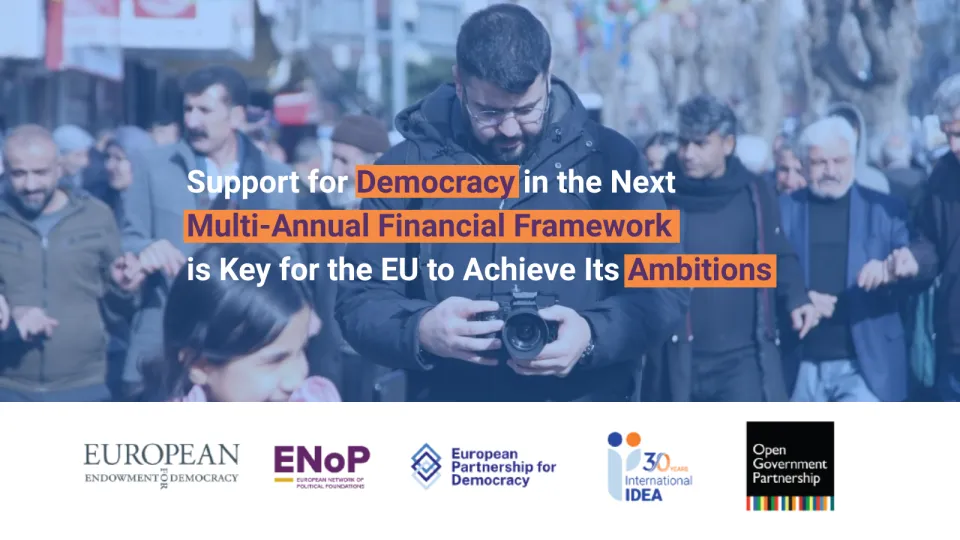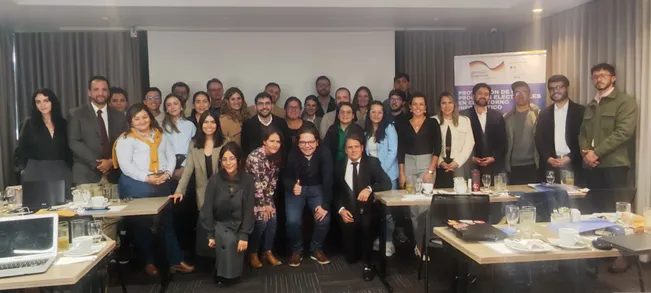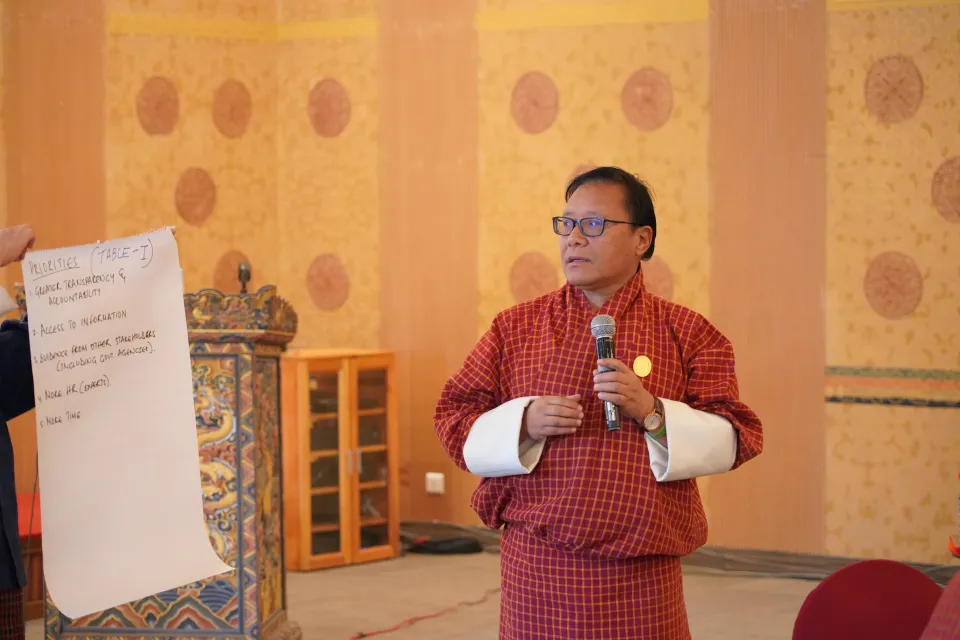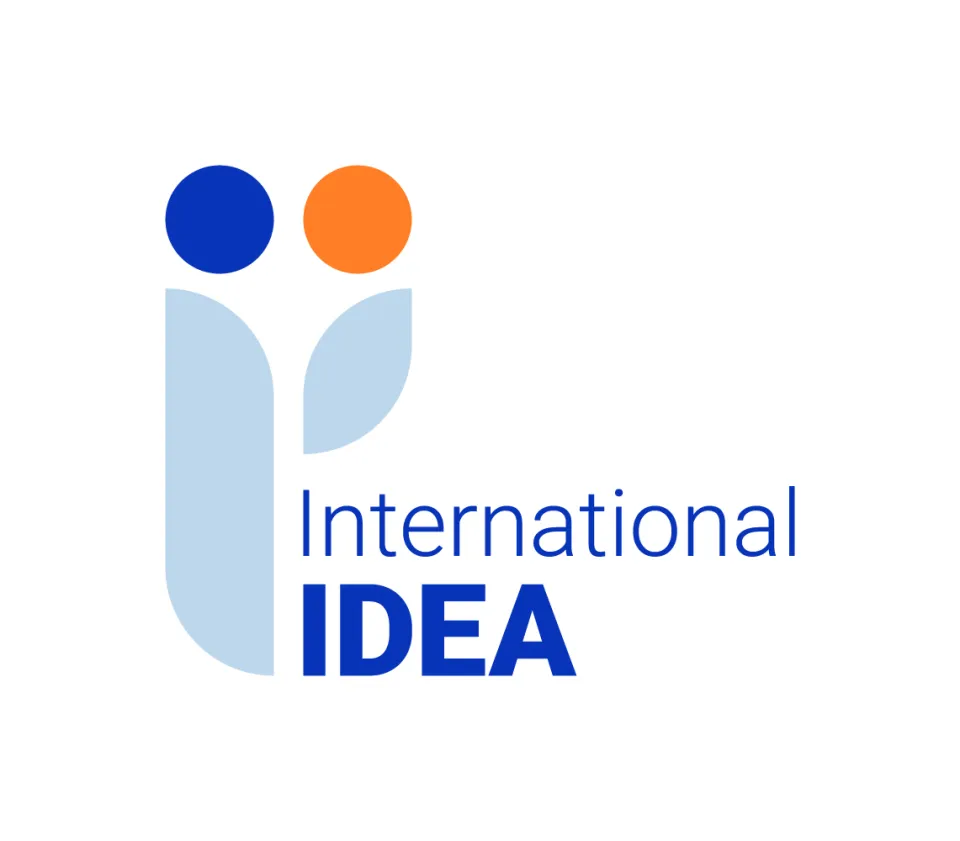Explainer: Executive Order ‘Preserving and Protecting the Integrity of American Elections’ from a global perspective
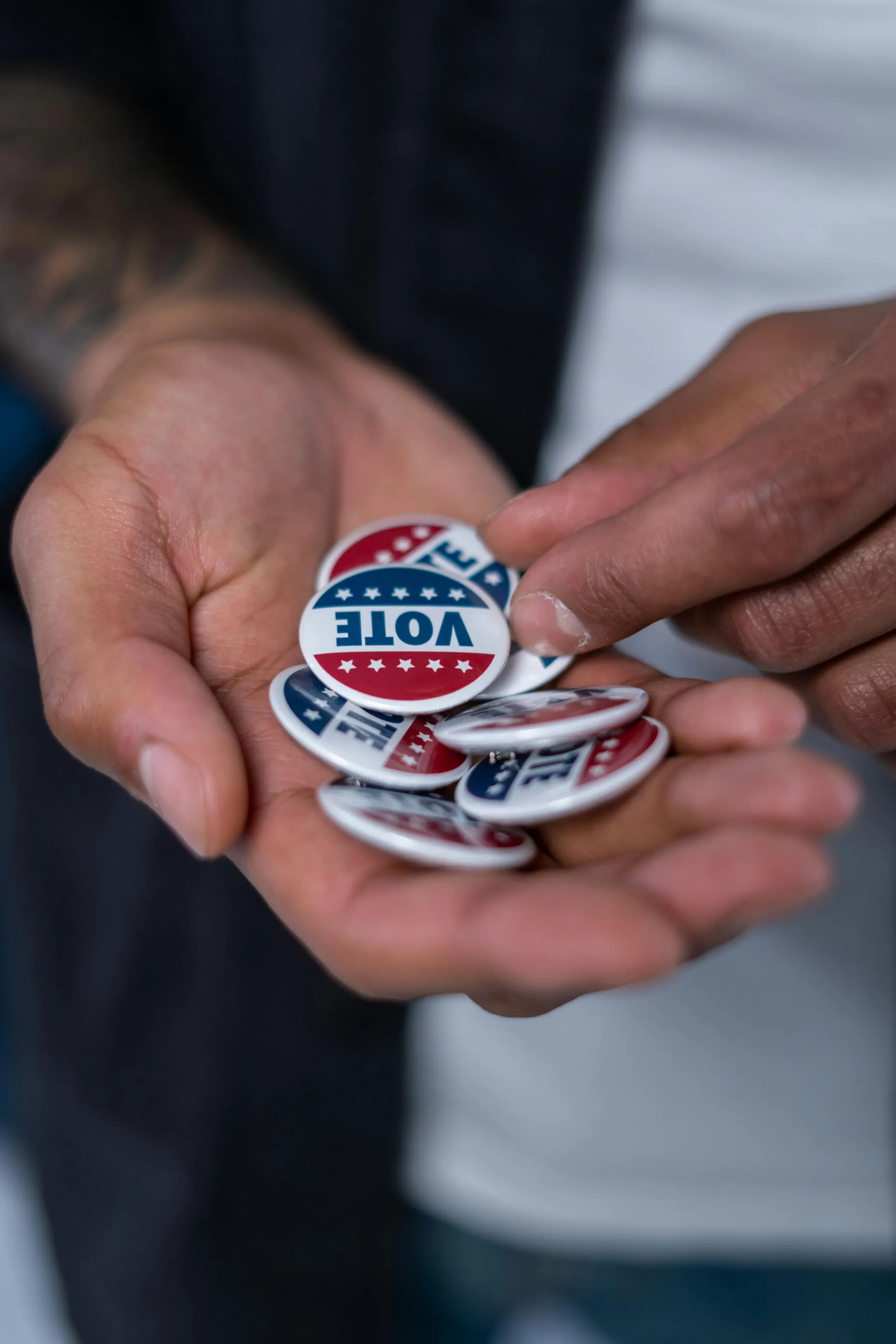
On 25 March 2025, President Donald Trump signed the Executive Order ‘Preserving and Protecting the Integrity of American Elections’. The order outlines sweeping reforms that aim to protect US elections from fraud, foreign interference and systemic error.
The principal mandates of the Executive Order (EO) include:
1. Enforcement of documentary proof of citizenship for voter registration in federal elections.
2. Sets a deadline for receiving mail-in (postal) ballots by election day.
3. Requires recertification of voting systems to meet updated security, accessibility and performance standards.
4. Tightens restrictions against foreign interference in elections.
The order also threatens to withhold federal funding from states that do not comply. Reforms are expected to be implemented within 30 to 180 days.
This article offers comparative international insights on the EO’s proposed reforms.
1. The EO stresses free and fair elections, but its narrow focus on fraud overlooks other universally accepted electoral principles equally important for democratic elections, such as universal and equal suffrage, voter access and ballot secrecy. International good practice indicates that electoral rules must balance principles of security with equality and access, to avoid anti-fraud or stringent integrity measures that are disproportionate to the actual threat. Otherwise, it can lead to marginal improvements in one area while risking hard-won gains in voter participation, franchise and election administration.
2. While the EO claims to restore trust in elections, expert assessments consistently show that US elections demonstrate high levels of integrity. International IDEA’s Global State of Democracy (GSoD) Indices rated the USA at 0.71 out of 1 for Credible Elections in 2023, comparable to countries such as Croatia and Iceland. Public trust in US elections has declined in recent years—driven largely by partisan narratives and disinformation—but actual incidents of fraud are extremely rare.
Internationally, trust in elections is best built through transparency, public communication, impartial election administration, proportional safeguards and inclusive processes. Some democracies (such as Australia and Taiwan) also take a broad approach to electoral trust-building, emphasizing strong media ecosystems, media literacy and independent fact-checking to build democratic resilience and electoral trust.
3. The process of electoral reform is as important as the substance. Effective electoral reform in democracies is built on carefully crafted legislation, broad public consultation and open parliamentary debate. Rushed and abrupt reforms, introduced unilaterally and that lack broad public or political support, are less likely to succeed. International guidelines and good practices for electoral reform show that success is built on consensus, transparency, inclusive planning, adequate timeframes and sufficient resources.
Recent international experiences highlight the contrast between successful and more contested electoral reform efforts. In Wales in the UK, the 2024 Elections and Elected Bodies Act was approved after broad consultation and legislative review, introducing measures such as automatic voter registration. In contrast, In Georgia, electoral reforms abruptly introduced a few months before the 2024 elections and without broad public support, sparked concerns over power centralization amid political turmoil and civil society criticism of a controversial foreign influence bill.
4. Whether centralized or decentralized, independence and impartiality in election administration are essential. The US Constitution assigns primary responsibility for election administration to the states. Since the 2013 Supreme Court decision, the federal role has been primarily limited to oversight and support. The US Election Assistance Commission (EAC)—an independent, bipartisan agency—serves as an advisory and standard-setting body without enforcement authority.
The new EO challenges this decentralized framework by imposing federal mandates, such as proof of citizenship for voter registration for federal elections—to be enforced by federal agencies— and setting deadlines for postal ballots. Legal experts have flagged this as a potential executive overreach, bypassing Congress and infringing on states’ powers, and is already facing legal challenges.
The US’s state-led system results in a patchwork of rules that can create inconsistent voter experiences and unequal access, compared to other countries. Yet it is grounded in constitutional principles of federalism and offers benefits such as local adaptability, innovation and resilience against large-scale cybersecurity threats or centralized political capture.
Global norms emphasize that electoral management bodies (EMBs) should be established and funded in ways that ensure political neutrality, administrative independence, professional effectiveness, and transparency in their appointment processes. Large democracies such as Australia, Canada and Mexico have centralized EMBs that deliver consistent national standards. However, these systems are not easily transferrable as they have evolved throughout each country’s history. Crucially, these EMBs are structurally independent from the executive, reinforcing impartiality and public trust.
While greater consistency in electoral standards abroad offers valuable lessons for the USA, any move to enforce national electoral standards must be rooted in public and political dialogue, be supported by bipartisan consensus and respect constitutional principles.
5. The EO mandates documentary proof of US citizenship to vote in federal elections. It also requires state and federal agencies—in coordination with Department of Government Efficiency (DOGE)—to verify citizenship status using government databases, thus centralizing and tightening federal control over voter registration, traditionally a state responsibility.
The evidence indicates that illegal noncitizen voting is exceptionally rare in the USA. There are two concerns with this part of the EO: potential disenfranchisement of voters and data privacy.
In most countries, citizenship is verified during voter registration to establish eligibility, while ID checks on election day confirm identity.
International good practice models tend to prioritize inclusivity and aim to simplify voter registration. Some countries—such as Costa Rica, Denmark, Finland, Germany and Sweden—use automatic systems linked to national population . The Australian Electoral Commission contacts potential new voters who have just received citizenship or reached voting age. In Indonesia, officials visit homes to register voters face to face.
In the USA, it is estimated that less than half the states have automatic voter registration. In all states, voter registration and citizenship attestation rely on self-reporting by citizens. Voter registration varies by state, which leads to wide variation in voter registration across the country (from 61 per cent in North Carolina to 83 per cent in Oregon).
At the polls, ID requirements also differ across countries. India and Mexico provide free, universal voter IDs, Canada and Sweden accept multiple forms of ID or affidavits, and in Germany, it is mandatory to carry identification. However, in countries where broad segments of society do not have identification, upholding democratic principles requires electoral authorities to ensure that photo ID or voter ID cards are made readily available to citizens at no or limited cost. To this end, EMBs often conduct registration campaigns to ensure all citizens obtain the necessary documentation.
In the USA, there is no national ID system, and millions lack standard identification. It is estimated that less than half of US citizens have a passport and that 9 per cent of eligible voters (21.3 million people) do not have proof of citizenship readily available. Strict ID requirements and proof of citizenship risk suppressing turnout among eligible voters.
The EO’s proposal for more unified voter databases could enhance voter register accuracy and reduce concerns about fraud (which the evidence suggests is insignificant). However, critics warn that DOGE’s access to sensitive voter data, including party affiliation, poses serious privacy risks. Therefore, any reform in this direction must uphold data protection principles: access should be limited to essential information and citizens should be informed when their data is used. Other countries protect voter registry data through legal safeguards, limited data collection, strict access controls, voter notification rights and oversight by independent electoral or data protection authorities. In Estonia, for example, citizens are notified every time their data is accessed by a public authority.
6. On voting technology, the EO bans barcode-based voting verification (except for accessibility purposes) and calls for voter-verifiable paper trails, with recertification of election equipment within 180 days. While these standards align with international ones, mandating nationwide recertification of voting machines within a short time frame is problematic due to the significant time and resource burden it imposes on states, which also risks disrupting election timelines. Countries such as India have direct recording electronic (DRE) voting machines and require verifiable paper trails. However, the EO cites Brazil for its biometric databases but omits that its voting machines do not use paper trails. While there is variation across the USA, many jurisdictions already use voter-verified paper trails and robust audit protocols. Recertifying election equipment poses a financial challenge for many states, especially when recent purchases may become unusable—and the EO offers no funding to offset these costs. International experience shows that introducing new technical mandates without sufficient preparation or resources can lead to failure and voter confusion that endanger election security.
7. The EO also limits postal voting by requiring ballots to be received by election day. Currently, 18 states and D.C. accept ballots postmarked by election day. The EO aligns with global trends in this regard. While countries such as Australia accept ballots postmarked by election day even if they arrive later, many democracies are moving towards requiring ballots to be received by election day.
While the EO puts emphasis on election-day voting, the global trend is towards expanding special voting arrangements (SVAs), such as early, postal and mobile voting. As International IDEA’s SVAs Handbook shows, when backed by appropriate legal frameworks, operational capacity and transparency, SVAs quickly become an accepted and appreciated voting modality. Initially designed for special or vulnerable groups, SVAs also addressed a general demographic trend of higher mobility. Globally, the Covid-19 pandemic accelerated the shift to expand SVAs to the general population to maintain voting rights. More recently, SVAs have helped ensure voting continuity even for people displaced by extreme weather such as forest fires, floods and storms. Once SVAs are introduced or expanded, their convenience often makes them very popular with voters as they serve as an important tool for improving access to voting.
8. The EO enforces measures against foreign funding and system access to counter foreign interference in elections. The USA already has laws in place to counter foreign interference in elections. More importantly, cyber threats and disinformation campaigns require coordinated, interagency responses—many of which have been weakened by recent federal budget cuts. Disbanding programmes such as the Cybersecurity and Infrastructure Security Agency (CISA’s) Elections Infrastructure Information Sharing and Analysis Center (EI) and Multi-State Information Sharing and Analysis Center (MSI-ISAC) or the FBI’s foreign interference task force, which supported state and local officials with threat intelligence and response coordination, risks undermining the very reforms proposed in the EO. Effective election reform depends on reinforcing, not fragmenting, these efforts.
Conclusion
While some measures in the EO reflect legitimate goals, international experience shows that rushed, top-down reforms without adequate deliberation, resources, infrastructure or safeguards can undermine election security and trust, and risk disenfranchising voters. By enacting major electoral reforms through an Executive Order—without legislative deliberation or broad consensus—the order undermines core principles of good electoral reform practice and international standards, and risks compromising electoral integrity by prioritizing the risk of electoral fraud—already relatively rare—over democratic inclusiveness and transparency.
